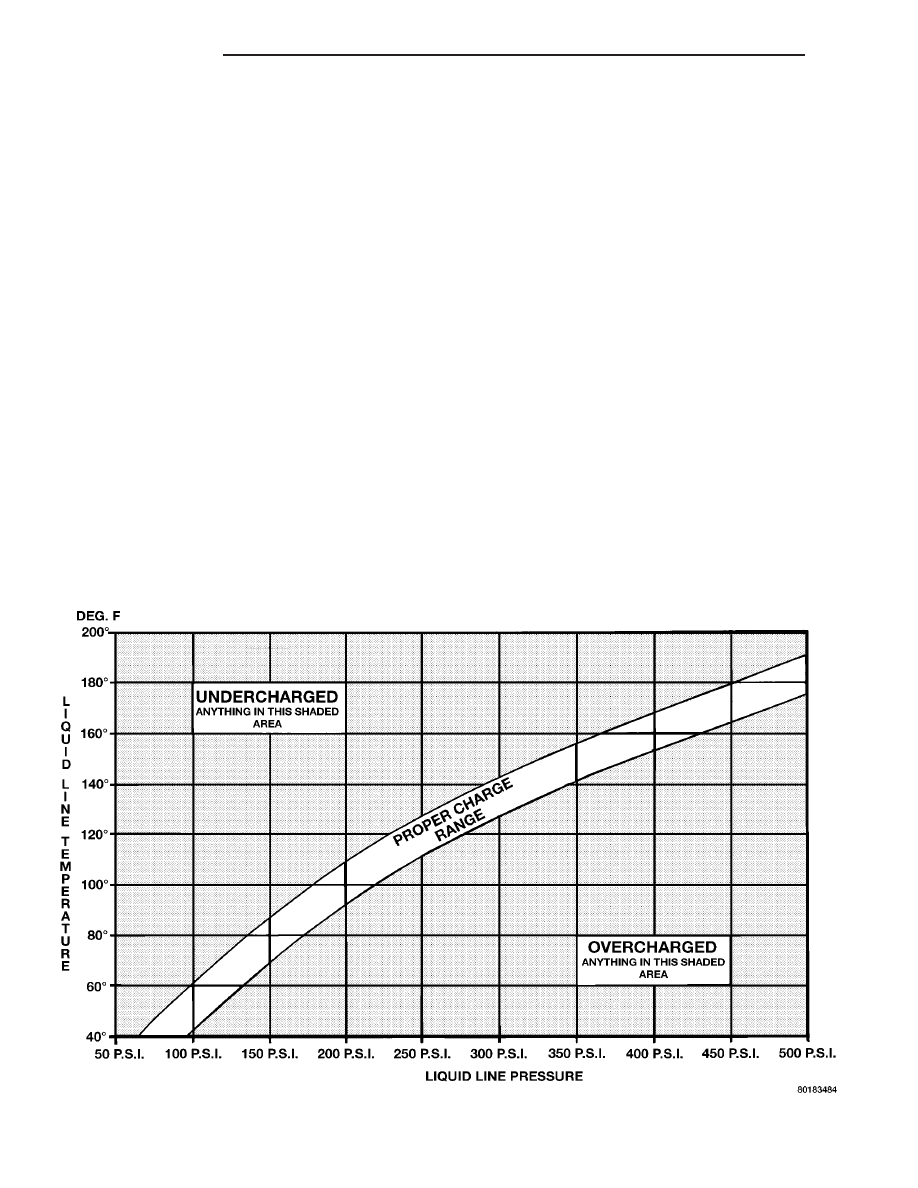Jeep Wrangler TJ. Manual - part 599

(5) Observe the liquid line (discharge) pressure
and liquid line temperature. Using the Charge Deter-
mination Chart (Fig. 3), determine whether the
refrigerant system is operating within the proper
charge range.
(a) If the refrigerant system is operating in the
undercharged area of the chart, add 0.057 kilogram
(0.125 pound or 2 ounces) of R-134a refrigerant to
the system.
(b) If the refrigerant system is operating in the
overcharged area of the chart, reclaim 0.057 kilo-
gram (0.125 pound or 2 ounces) of refrigerant from
the system.
(6) Recheck the refrigerant system charge level fol-
lowing each refrigerant level adjustment. Continue
this process until the refrigerant system readings are
in the proper charge range on the Charge Determi-
nation Chart.
REFRIGERANT SYSTEM RECOVERY
WARNING: Refer to the applicable warnings and
cautions for this system before performing the fol-
lowing operation (Refer to 24 - HEATING & AIR
CONDITIONING/PLUMBING - WARNINGS) and (Refer
to 24 - HEATING & AIR CONDITIONING/PLUMBING -
CAUTIONS). Failure to follow the warnings and cau-
tions could result in possible personal injury or
death.
A R-134a refrigerant recovery/recycling/charging
station that meets SAE Standard J2210 must be
used to recover the refrigerant from an R-134a refrig-
erant system. Refer to the operating instructions sup-
plied by the equipment manufacturer for the proper
care and use of this equipment.
REFRIGERANT SYSTEM EVACUATE
NOTE: Special effort must be used to prevent mois-
ture from entering the A/C system oil. Moisture in
the oil is very difficult to remove and will cause a
reliability problem with the A/C compressor.
If an A/C compressor designed to use R-134a refrig-
erant is left open to the atmosphere for an extended
period of time. It is recommended that the refriger-
ant oil be drained and replaced with new oil or a new
A/C compressor be used. This will eliminate the pos-
sibility of contaminating the refrigerant system.
If the refrigerant system has been open to the
atmosphere, it must be evacuated before the refriger-
ant system can be filled. Moisture and air mixed
with the refrigerant system will raise the compressor
head pressure above acceptable operating levels. This
Fig. 3 Charge Determination Chart (Ambient Test Condition 85° F)
24 - 62
PLUMBING
TJ
PLUMBING (Continued)